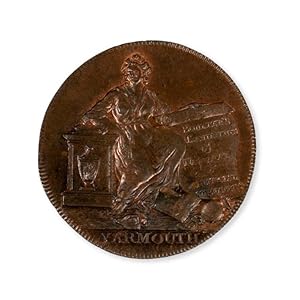boulter daniel joseph john (1 Ergebnisse)
FeedbackSuchfilter
Produktart
- Alle Product Types
- Bücher (1)
- Magazine & Zeitschriften (Keine weiteren Ergebnisse entsprechen dieser Verfeinerung)
- Comics (Keine weiteren Ergebnisse entsprechen dieser Verfeinerung)
- Noten (Keine weiteren Ergebnisse entsprechen dieser Verfeinerung)
- Kunst, Grafik & Poster (Keine weiteren Ergebnisse entsprechen dieser Verfeinerung)
- Fotografien (Keine weiteren Ergebnisse entsprechen dieser Verfeinerung)
- Karten (Keine weiteren Ergebnisse entsprechen dieser Verfeinerung)
- Manuskripte & Papierantiquitäten (Keine weiteren Ergebnisse entsprechen dieser Verfeinerung)
Zustand
- Alle
- Neu (Keine weiteren Ergebnisse entsprechen dieser Verfeinerung)
- Antiquarisch (1)
Einband
- alle Einbände
- Hardcover (Keine weiteren Ergebnisse entsprechen dieser Verfeinerung)
- Softcover (Keine weiteren Ergebnisse entsprechen dieser Verfeinerung)
Weitere Eigenschaften
- Erstausgabe (Keine weiteren Ergebnisse entsprechen dieser Verfeinerung)
- Signiert (Keine weiteren Ergebnisse entsprechen dieser Verfeinerung)
- Schutzumschlag (Keine weiteren Ergebnisse entsprechen dieser Verfeinerung)
- Angebotsfoto (1)
- Keine Print-on-Demand Angebote (1)
Gratisversand
- Kostenloser Versand nach Deutschland (Keine weiteren Ergebnisse entsprechen dieser Verfeinerung)
Verkäuferbewertung
-
Copper halfpenny token for Daniel Boulter's 'Exhibition of natural and artificial curiosities', Yarmouth, Norfolk, 1796.
Anbieter: Douglas Stewart Fine Books, Armadale, VIC, Australien
Yarmouth : Joseph, Daniel and John Boulter, 1796. Æ halfpenny, diameter 29.8 mm. Obverse: A female seated holding a scroll inscribed BOULTER'S EXHIBITION OF NATURAL AND ARTIFICIAL CURIOSITIES. In ex. YARMOUTH in a straight line. Reverse: Three figures symbolising Asia, Africa and America presenting various curiosities to Britannia, who is recording them in a book. Around the perimeter UNDIQUAQUE COLLIGITUR. In ex. 1796. Edge PUBLISHED BY JOS. DANL. & JNO. BOULTER. A choice, uncirculated example. This privately issued halfpennywas issued by Daniel Boulter (1740-1802), a merchant and the developer of Boulter's Exhibition of Natural and Artificial Curiosities, jointly with his brothers Joseph Boulter (1743-1819), cook, grocer, tallow chandler, and John Boulter (1745-1816), ship's captain.The Boulters were a Quaker family from the village of Worstead in Norfolk. In 1764 Daniel Boulter had opened his first shop in Yarmouth, selling silverware, toys, books and prints. He moved tolarger premisesat 19, Market Place, in 1777, and in August 1778 opened his own museum in the same building. Boulter'sExhibition of Natural and Artificial Curiosities was a collection of several thousand objects, all on display to the fee-paying public. A catalogue of Boulter's collection published in London around 1794 (Museum Boulterianum. A catalogue of the curious and valuable collection of natural and artificial curiosities in the extensive museum of Daniel Boulter, Yarmouth) describes natural history specimens such as 'foreign birds and beasts in high preservation', 'reptiles, fish, and insects, dried and in spirits', shells, fossils, insects, anatomical preparations, and plants. Among the 'artificial' curiosities there were Roman, Greek and Egyptian antiquities, Mediaeval stained glass, weapons and armour, coins, paintings, prints and books. In 1780 Boulter had purchased many items from the South Seas directly from the crew of Cook's ships theResolution and Discovery in London, and the catalogue advertises these on its title page as 'Dresses, ornaments, weapons of war, fishing-tackle, and other singular inventions of the natives of the lately discovered islands in the South-Seas'. Daniel Defoe, on his tour of Norfolk in 1795, wrote that 'there is nothing more worthy of notice than Boulter's museum in the Yarmouth Market Place'. However, having established itself as Yarmouth's foremost tourist attraction, two years after Boulter's death in 1802 the museum was closed and the collection dispersed. A fascinating example of late eighteenth-century British privately issued coinage. Such tokens are known as Conder tokens, after the numismatist James Conder who produced the first catalogue devoted to them in 1798. Dalton & Hamer,The provincial token-coinage of the 18th century,Norfolk 54; Atkins, Tradesmen's tokens of the eighteenth century, p. 54, 157. The Boulter Exhibition token appears to be unrecorded in Australian public collections.


